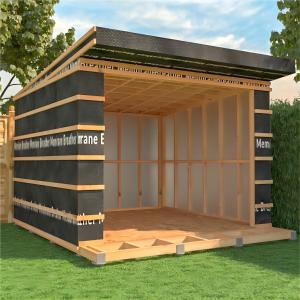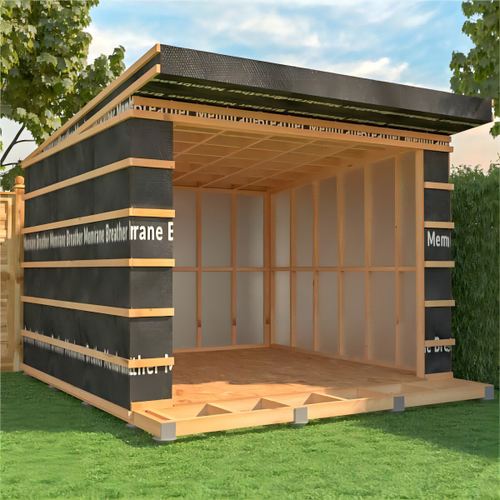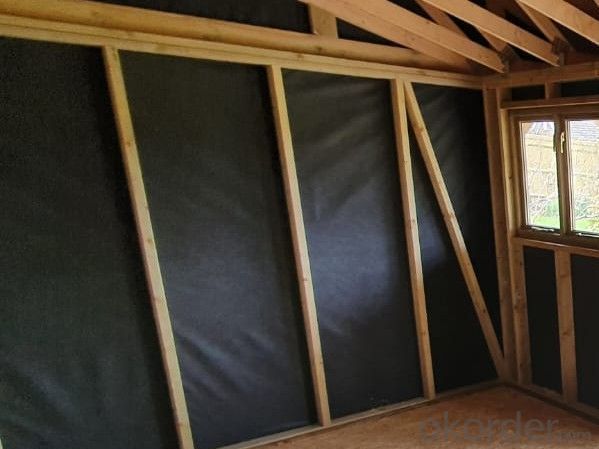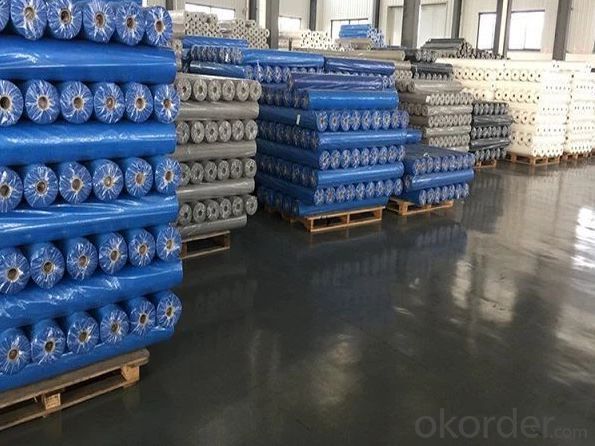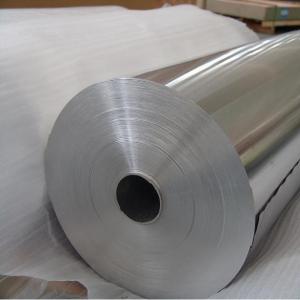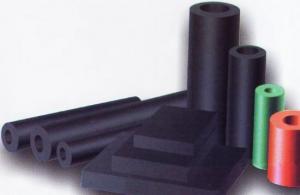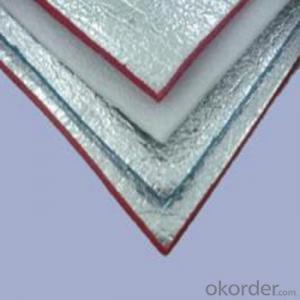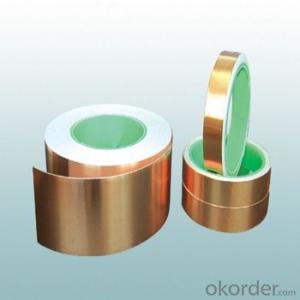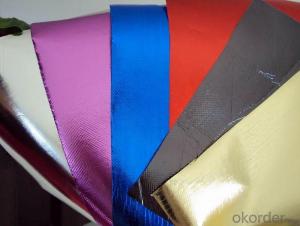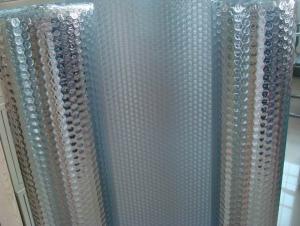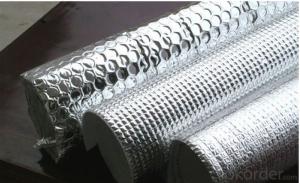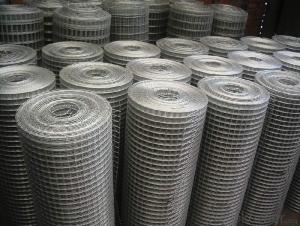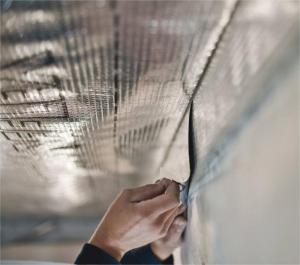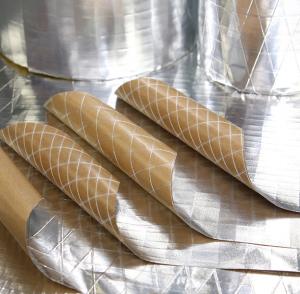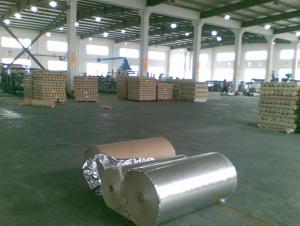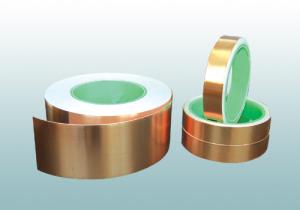Aluminum Foil Facing Breathable Membrane with Breather Membrane
- Loading Port:
- China main port
- Payment Terms:
- TT OR LC
- Min Order Qty:
- 5000 m²
- Supply Capability:
- 1000000 m²/month
OKorder Service Pledge
OKorder Financial Service
You Might Also Like
The breathable membrane is thermally laminated using a high-polymer material in its middle layer. When laid on top of an insulation system, it not only enhances the building's water tightness but also eliminates humidity within the enclosure through its unique breathability. This effectively prolongs the building's lifespan and contributes to thermal insulation, energy conservation, and an improved living environment.
Advantages:
They offer excellent water resistance, protecting against moisture and potential leaks.
They possess a unique vapor permeability.
They are tear-resistant, wear-resistant, and possess good extensibility, ensuring durability and flexibility.
They are lightweight, thin, and antiskid, with good low-temperature flexibility, making them suitable for construction in various conditions.
They are made from 100% recyclable polymer materials, aligning with ecological requirements and promoting sustainability.
Applications:
Roofing: Used under roofing materials like tiles or shingles to enhance waterproofing and ventilation.
Walls: Applied behind cladding to manage moisture and maintain structural integrity.
Timber Frame Construction: Integrated to prevent moisture buildup in timber frame buildings.
Flooring: Used to prevent rising damp in ground or timber floors.
Facade Construction: Enhances insulation and weather protection while allowing breathability in ventilated facades.
Industrial Use: Controls moisture in warehouses, factories, and agricultural buildings.
Improves energy efficiency and moisture control in retrofit projects.
Parameter:
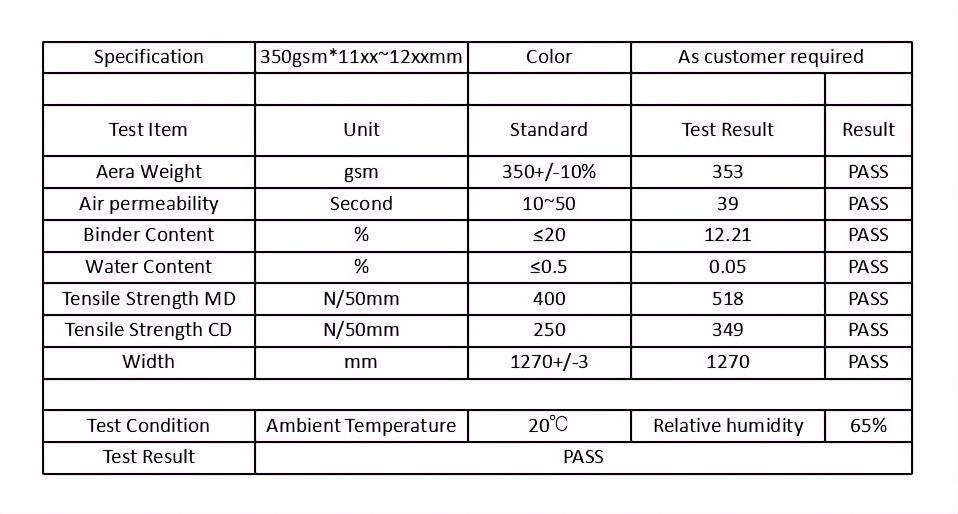
Cost Analysis:
Initial Cost:
Price Range: The cost of breathable membranes varies based on material, thickness, and brand.Factors Affecting Cost: Material quality, thickness, and additional features like UV resistance.
Maintenance Costs:
Long-term Savings: Reduces expenses by preventing issues such as moisture damage and mold growth.
Durability: High-quality membranes require less frequent replacement or repair.
Return on Investment:
Energy Savings: Improved insulation can reduce heating and cooling costs, leading to significant energy savings.
Property Value: Enhanced building performance can increase property value and marketability.
Cost Comparison:
Traditional Moisture Barriers: Lower initial cost but higher long-term maintenance and energy costs.
Breathable Membranes: Higher initial investment but greater overall savings and benefits in the long run.
Market Trends:
Current Use:
Overview: Widely used in residential, commercial, and industrial construction for moisture control and energy efficiency.
Popularity: Increasingly popular in green building projects and sustainable construction practices.
Technological Innovations:
New Materials: Advances in polymer science have led to more durable and efficient breathable membranes.
Smart Sensors: Integration of sensors to monitor moisture levels and structural conditions in real-time.
Self-healing Coatings: Development of membranes with self-repairing capabilities to extend lifespan and reduce maintenance.
Growth Projections:
Market Forecasts: Expected to grow significantly, driven by increasing demand for energy-efficient and sustainable building materials.
Emerging Markets: Growth opportunities in regions with extreme climates, where moisture control and insulation are critical.
Emerging Applications:
Automotive: Use in vehicle manufacturing for moisture control and thermal management.
Sports Facilities: Applications in sports arenas and leisure centers to manage humidity and enhance comfort.
New Construction Methods: Adaptation to modern construction techniques such as modular and prefabricated building systems.
- Q: Is it possible for aluminum foil facing to induce allergic reactions in certain individuals?
- <p>Yes, aluminum foil facing can cause allergic reactions in some people. Aluminum is a common allergen, and individuals with a sensitivity to it may experience contact dermatitis or other allergic responses when exposed to aluminum-containing products. Symptoms can include redness, itching, and rashes. People with a known allergy to aluminum should avoid direct skin contact with aluminum foil and products containing aluminum.</p>
- Q: What are the recommended cleaning products for aluminum foil facing after use?
- <p>For cleaning aluminum foil facing after use, it's best to use gentle, non-abrasive cleaning products. Mild dish soap and warm water are usually sufficient for most cleaning needs. Avoid using harsh chemicals or abrasive scrubbers, as they can damage the aluminum surface. If there are stubborn stains, a mixture of baking soda and water can be used as a gentle abrasive. Always rinse thoroughly and dry the surface to prevent any residue or potential damage.</p>
- Q: What is the preferred side of the lining material to face up in a baking tin: parchment paper or aluminum foil?
- <p>When lining a baking tin, it's generally better to use parchment paper with the non-shiny side facing up. Parchment paper is designed for direct contact with food and provides a non-stick surface, which is ideal for baking. Aluminum foil, on the other hand, should be dull side up to prevent food from sticking, but it's not recommended for direct contact with food as it can tear or create an uneven surface. If using foil, ensure it's food-safe and handle with care to avoid punctures.</p>
- Q: Is it possible to utilize a sheet of aluminum foil as a liner for a baking pan?
- <p>Yes, you can use a sheet of aluminum foil as a baking pan liner. It helps prevent food from sticking to the pan and makes cleanup easier. Ensure the foil covers the bottom and sides of the pan, and use enough to fold over the edges for easy removal of baked goods. However, avoid using foil for very high-temperature baking or broiling as it can melt or burn.</p>
- Q: How should aluminum foil be stored after it has been used for cooking or food storage to keep it clean and ready for future use?
- <p>The best ways to store aluminum foil facing after using it for cooking or food storage involve cleaning and organizing it properly. First, wash the used foil with warm soapy water to remove any food residue. Rinse it thoroughly and pat dry with a clean towel. To store, roll the foil tightly starting from the center, keeping it compact and neat. Alternatively, you can store it in a resealable plastic bag or a dedicated foil container to keep it clean and prevent it from tearing. Always store it in a cool, dry place away from direct sunlight to maintain its quality.</p>
- Q: The user is asking if it's possible to use aluminum foil as a cover for a casserole dish.
- <p>Yes, you can use aluminum foil as a cover for a casserole dish. It's a common practice to cover the dish with foil to prevent the top from drying out during baking or to keep the contents warm. Ensure the foil is food-grade and does not touch the heating elements of the oven. For best results, use heavy-duty aluminum foil to avoid punctures and tearing. Remember to remove the foil during the last few minutes of baking to allow the top to brown if desired.</p>
- Q: This question asks for guidance on preparing a nutritious meal using aluminum foil as a cooking method.
- <p>To make a healthy meal using aluminum foil, consider 'foil packet cooking'. Choose lean protein like chicken or fish, and pair it with a variety of colorful vegetables such as bell peppers, zucchini, and cherry tomatoes. Season with herbs, garlic, and a drizzle of olive oil. Fold the foil to create a sealed packet and bake in the oven at 400掳F (200掳C) for about 20-25 minutes or until the protein is cooked through and the vegetables are tender. This method retains nutrients and flavors while minimizing added fats.</p>
- Q: Can aluminum foil be shaped into a roasting rack?
- <p>Yes, you can create a makeshift roasting rack using aluminum foil. To do this, take two long sheets of aluminum foil and fold them back and forth to create a series of parallel ridges. These ridges will provide support for your roast while allowing air to circulate underneath. Place the folded foil on a baking sheet, spacing the ridges evenly apart to create a grid-like pattern. Your roast can then be placed on top of this foil 'rack' for cooking. This method is a simple and effective way to elevate your food for better heat distribution and crisping.</p>
- Q: Is it possible to use aluminum foil with a reflective side to construct a sandwich?
- <p>While it's technically possible to use aluminum foil facing to make a sandwich, it's not recommended. Aluminum foil is not designed for direct food contact, especially the reflective side which may contain harmful substances that could leach into the food. Instead, use the dull side of the foil or better yet, use food-safe wrap or containers for preparing and storing sandwiches.</p>
- Q: The user is asking if aluminum foil can be used as a replacement for tin foil in baking and grilling applications.
- <p>Yes, you can use aluminum foil as a substitute for tin foil in baking pans or grilling pans. Both aluminum and tin foil are commonly used for similar purposes, such as lining pans, wrapping food, and preventing food from sticking. Aluminum foil is more widely available and less expensive than tin foil. It conducts heat well and is non-toxic, making it a suitable alternative for most baking and grilling needs. However, note that aluminum may react with acidic foods, so it's best to avoid using it in such cases or to use a heavier gauge to minimize contact with the food.</p>
Send your message to us
Aluminum Foil Facing Breathable Membrane with Breather Membrane
- Loading Port:
- China main port
- Payment Terms:
- TT OR LC
- Min Order Qty:
- 5000 m²
- Supply Capability:
- 1000000 m²/month
OKorder Service Pledge
OKorder Financial Service
Similar products
Hot products
Hot Searches
Related keywords
